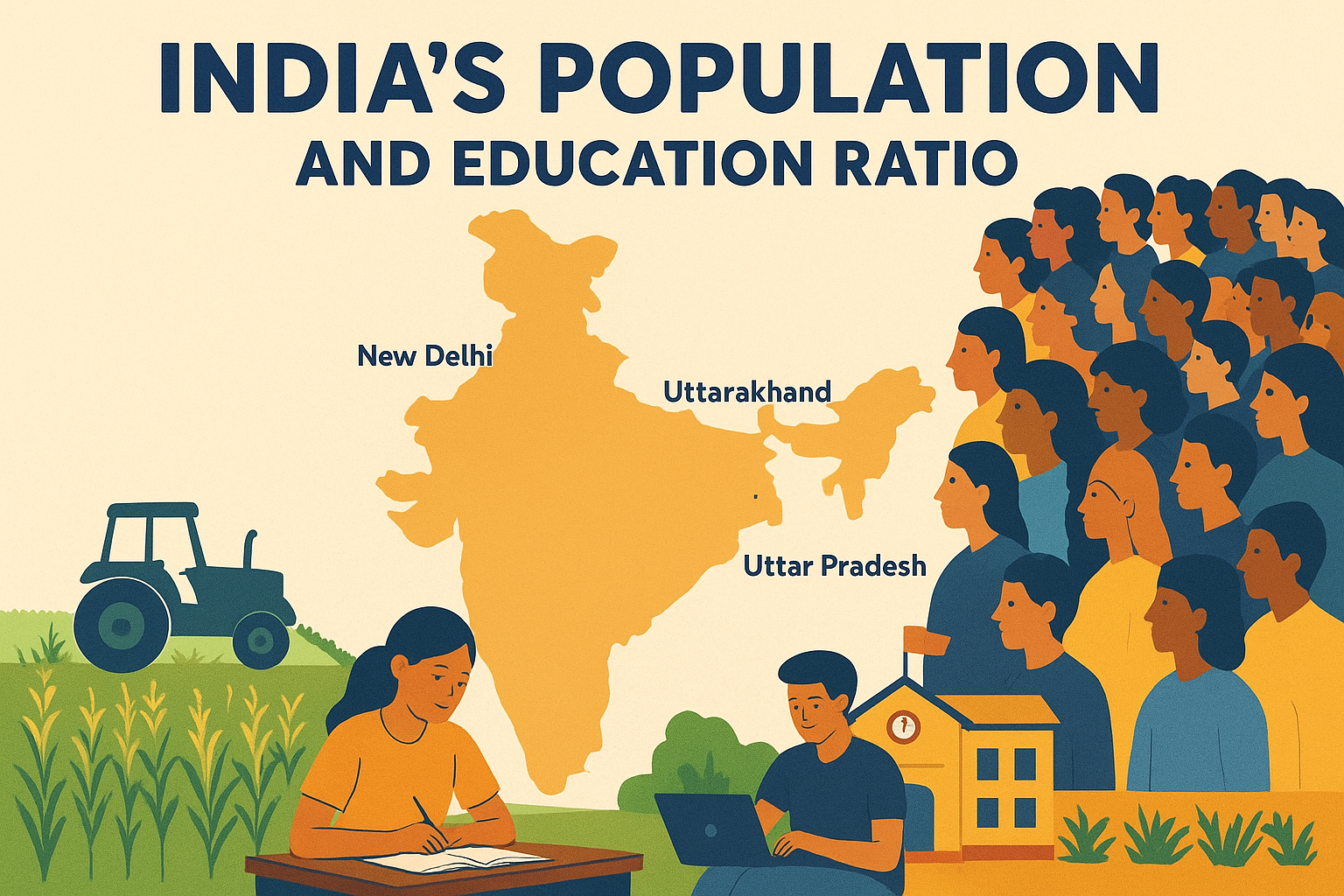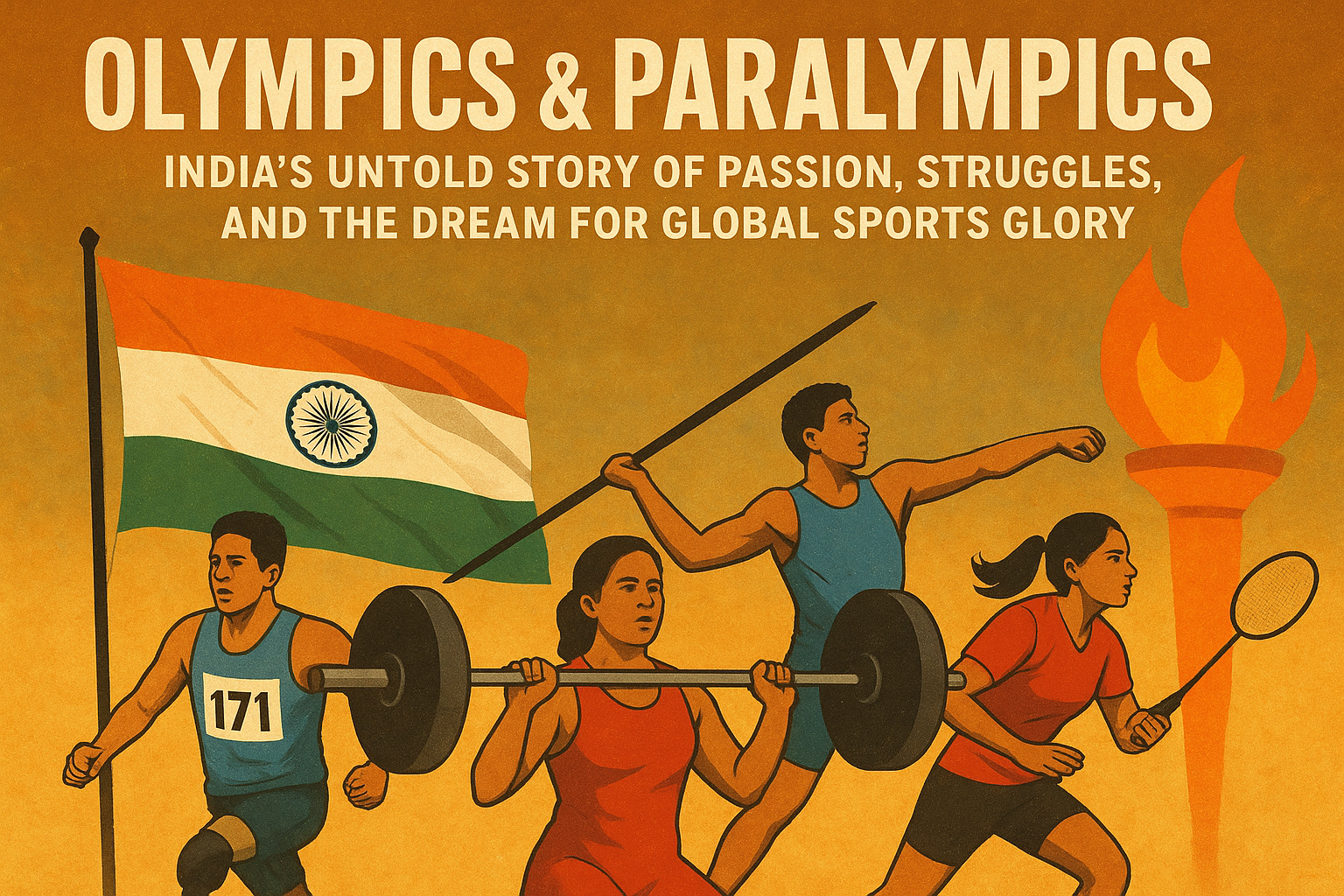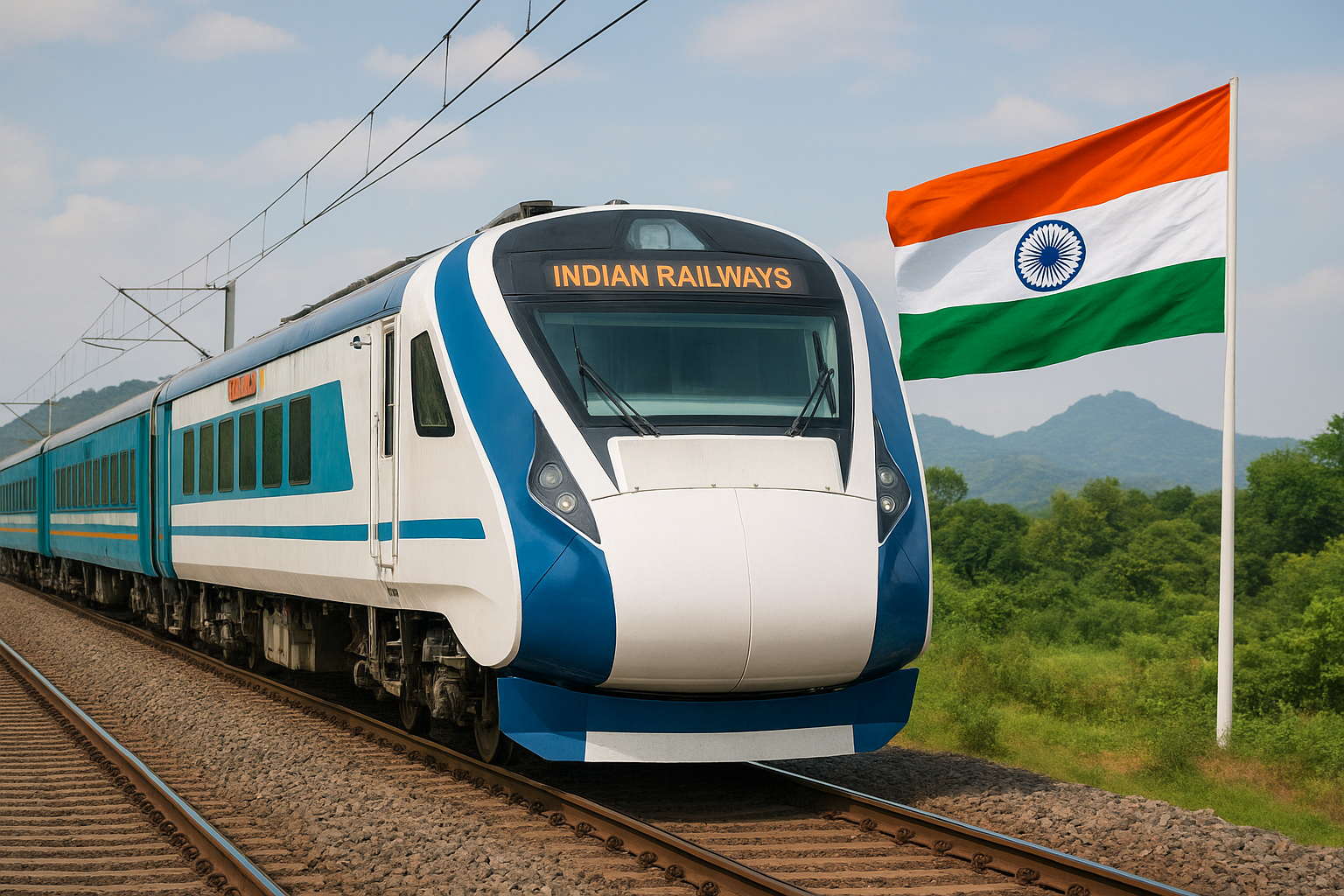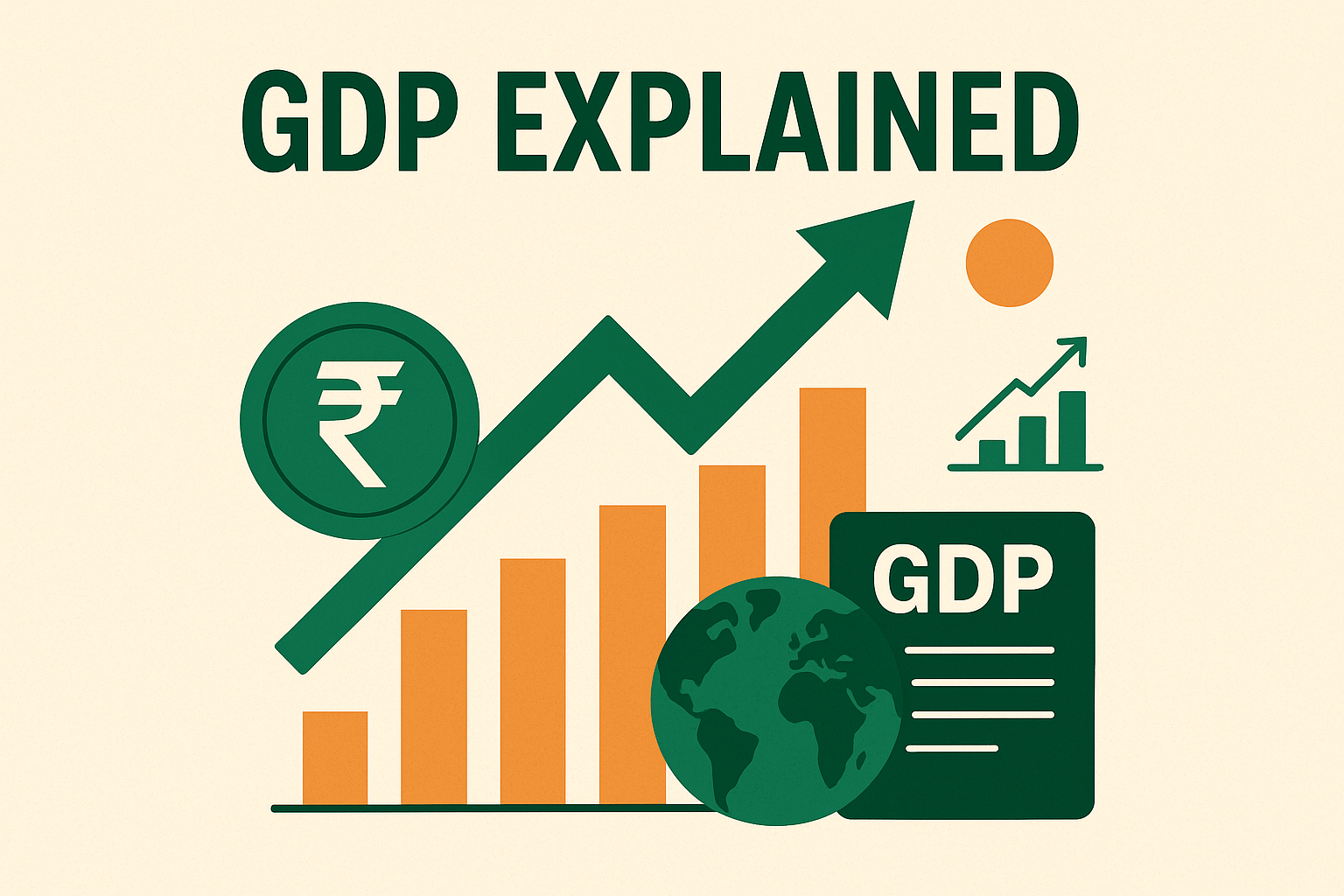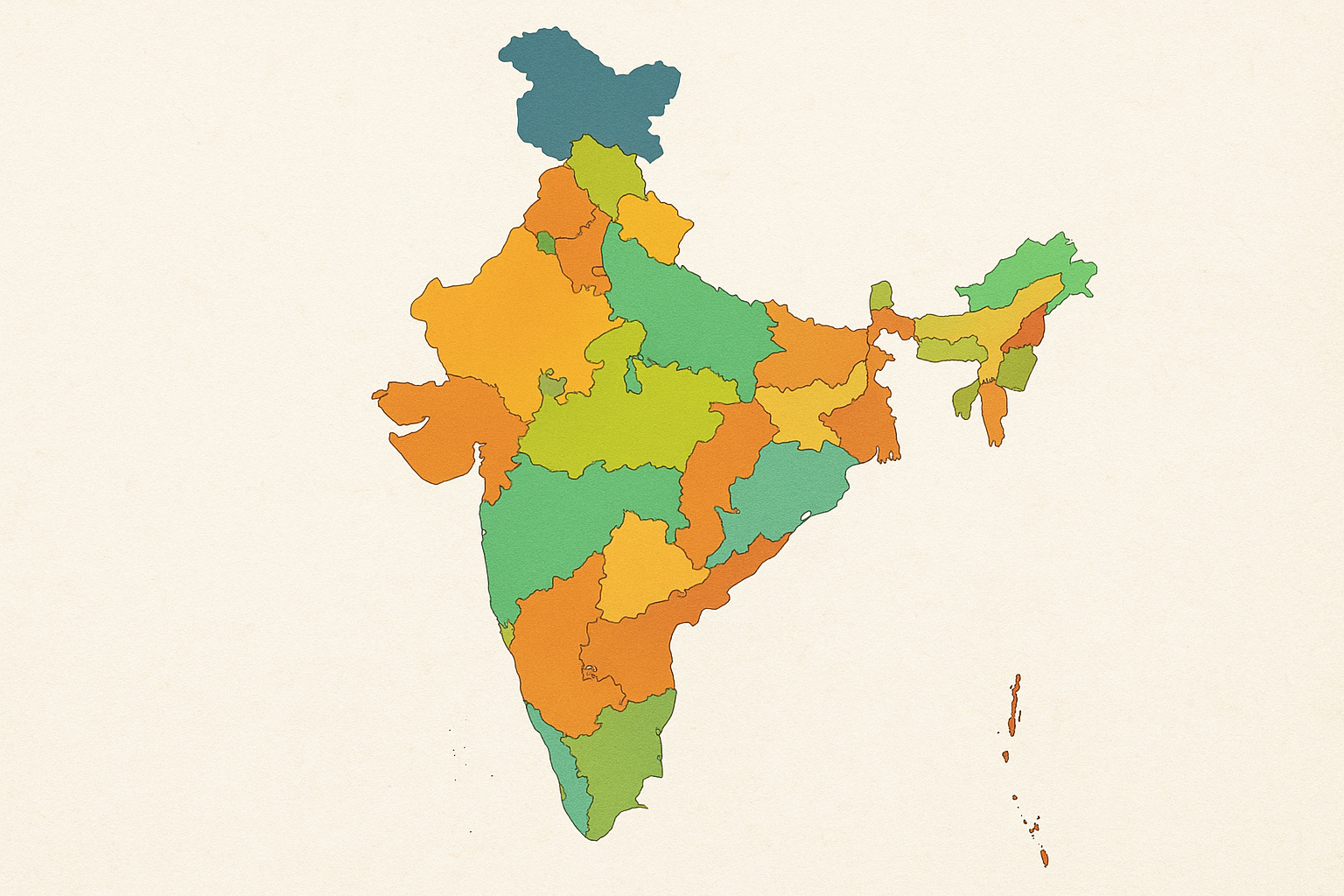India has become the most populated country in the world, but the nation’s education system and infrastructure have failed to expand in proportion. This blog compares India with top countries and China, highlighting how uncontrolled population is the biggest obstacle to jobs, opportunities, and quality education.
Introduction: The Population–Education Paradox
Population can be a strength if managed with proper planning, schools, colleges, and job creation. But in India, the sheer size of the population has become the biggest hurdle. Every year millions of students compete for a limited number of higher education seats, while lakhs of young people remain unemployed despite having degrees. The reason is simple: India has not built enough universities, IITs, NITs, AIIMS, and research institutes to match its growing youth population. Meanwhile, the cost of elections and political campaigns is higher than the investment in education.
Let us first compare India with some leading countries to understand why population density and educational infrastructure play such a big role in development.
Population & Demographics: India vs Other Countries
| Country | Capital | Continent | Population | Rank | Density (per km²) | Annual Growth | Male/Female Ratio | Births/Day | Deaths/Day |
|---|---|---|---|---|---|---|---|---|---|
| United States | Washington | North America | 347M | 3 | 37.96 | +1.8M | 1.01 | 10,031 | 3,369 |
| United Kingdom | London | Europe | 69.6M | 22 | 287.49 | +413K | 0.97 | 1,862 | 1,845 |
| Germany | Berlin | Europe | 84.1M | 19 | 241.21 | +477K | 0.98 | 1,938 | 2,852 |
| Canada | Ottawa | North America | 40.1M | 38 | 4.41 | +384K | 0.99 | 989 | 893 |
| France | Paris | Europe | 66.7M | 23 | 121.72 | +102K | 0.94 | 1,737 | 1,715 |
| India | New Delhi | Asia | 1.5B | 1 | 492.36 | +12.9M | 1.07 | 63,171 | 26,604 |
| China | Beijing | Asia | 1.41B | 2 | 153.0 | -0.2M (decline) | 1.05 | 47,000 | 48,000 |
The difference is clear: while countries like the US, UK, France, and Canada have populations below 400 million, India alone has 1.5 billion people — more than the entire population of North America and Europe combined. Even China, which was once known for overpopulation, has started to witness population decline, while India’s continues to grow rapidly at nearly 13 million per year.
Why India’s Population is the Biggest Obstacle
With 63,000 births every day, India adds the equivalent of a medium-sized European city to its population daily. Compare this with countries like France or the UK, where births per day are less than 2,000. This overwhelming population growth makes it nearly impossible to match demand in jobs, education, food, and healthcare.
The density per square kilometer also tells the story: while Canada has only 4 people per square km, and the US has 38, India is packed with nearly 500 people per square km. This means resources are overburdened, schools are overcrowded, and competition for college seats becomes ruthless.
Countries with smaller populations can afford to provide high-quality education and facilities to their youth. India, on the other hand, struggles to provide even basic literacy and infrastructure because of the sheer numbers.
India’s Education Crisis in Numbers
While India has achieved progress in primary school enrollment and basic literacy, higher education remains critically under-supplied. The Gross Enrollment Ratio in higher education is still around 28–30%, which means more than 70% of college-age students cannot get into a degree program. Compare this with developed nations where higher education enrollment often exceeds 70–80%.
- Adult Literacy Rate: ~78% (global average is 86%).
- Gross Enrollment in Higher Education: ~29% vs US (~88%) and Germany (~70%).
- Seats in IITs + NITs + AIIMS: under 100,000 combined, for millions of aspirants.
- Pupil–Teacher Ratio: still high in many states (30–40 in primary schools).
This mismatch between population and education infrastructure is the root cause of India’s problems in employment, research, and skill development. Even highly talented students fail to get opportunities because there simply aren’t enough colleges, universities, and institutes for everyone.
Education System in India
India’s education system has witnessed significant growth over the decades, yet it still faces multiple challenges when compared to developed countries. With a population of over 1.4 billion, ensuring equal access to quality education is one of the biggest hurdles for policymakers.
The system is broadly divided into primary, secondary, higher secondary, and higher education. The Right to Education Act (RTE), 2009, made education a fundamental right for children between the ages of 6 and 14. Despite this, dropout rates remain high, especially in rural areas, due to poverty, infrastructure gaps, and lack of awareness.
Current Literacy and Enrollment Trends
- India’s literacy rate (2023 est.) stands at around 77%.
- Male literacy is approximately 84%, while female literacy is around 70%.
- Gross Enrollment Ratio (GER) in higher education: 28%.
- School dropout rates are still high: about 12-15% at secondary level.
These numbers show that although India has improved considerably, a large gap still exists when compared to developed nations like the USA, Germany, or Japan, where literacy and enrollment rates are above 95%.
Government Initiatives
The Indian government has introduced several schemes and policies to address the issues of education disparity. Some notable programs include:
- Samagra Shiksha Abhiyan – holistic approach for school education from pre-primary to XII.
- Mid-Day Meal Scheme – provides free lunch to encourage attendance and reduce malnutrition.
- Beti Bachao, Beti Padhao – focuses on girls’ education and empowerment.
- NEP 2020 (National Education Policy) – brings flexibility in curriculum, promotes skill-based learning, and aims for 100% GER in school education by 2030.
Comparison with Developed Nations
When comparing India’s education system with top countries such as the USA, Germany, and Japan, some critical differences emerge:
| Country | Literacy Rate | Gross Enrollment in Higher Education | Key Strength |
|---|---|---|---|
| India | 77% | 28% | Large youth population, improving digital infrastructure |
| USA | 99% | 88% | World-class universities, research-driven system |
| Germany | 99% | 70% | Vocational training, free higher education |
| Japan | 99% | 60% | High discipline, technology-driven education |
Challenges Ahead
Despite progress, India faces persistent challenges such as unequal access to education, lack of trained teachers, outdated curriculum, and digital divide. Rural areas especially lag behind due to poor infrastructure and social inequalities. Unless these issues are resolved, India may find it difficult to match the education levels of the world’s leading economies.
Government Policies and Initiatives in Education
The Indian government has recognized the pressing need to strengthen education in the face of a rapidly growing population. Several schemes and reforms have been introduced to improve literacy rates, provide equal access, and enhance the quality of education.
Key Government Initiatives
- Right to Education (RTE) Act, 2009: Ensures free and compulsory education for children between 6–14 years, making education a legal right.
- Samagra Shiksha Abhiyan: A holistic scheme integrating school education from pre-primary to Class 12, focusing on access, equity, and quality.
- National Education Policy (NEP) 2020: A major reform aiming to transform curriculum, teaching, and evaluation. It promotes flexibility, vocational training, use of regional languages, and technology-driven learning.
- Mid-Day Meal Scheme: Introduced to tackle malnutrition and increase school attendance, especially in rural and economically weaker sections.
- Skill India & Digital India Initiatives: Target skill development and digital literacy to prepare the workforce for global competitiveness.
Global Comparison: India vs Other Countries
While India has made progress, the education-to-population ratio still lags behind developed nations. Comparing India with countries like China, the United States, and Finland highlights both achievements and challenges.
India vs China
China, with a population of 1.4 billion, has managed to achieve nearly 97% literacy by heavily investing in education infrastructure and strict population control policies. India, on the other hand, struggles with a literacy rate of about 77.7% (2022 estimate), primarily due to vast socio-economic inequalities.
India vs USA
The United States, with a much smaller population (331 million), boasts near-universal education access and high literacy levels. A strong emphasis on research, innovation, and skill-based education allows the U.S. to maintain global leadership in higher education. India’s challenge is scaling similar quality to a population four times larger.
India vs Finland
Finland, often praised for its world-class education system, emphasizes teacher autonomy, student-centered learning, and minimal standardized testing. Though Finland’s population is only 5.5 million, its education model serves as an inspiration. For India, adapting such practices on a mass scale requires significant resources and policy alignment.
Major Challenges India Faces
- Population Pressure: With over 1.4 billion people, providing quality education to all remains a herculean task.
- Dropout Rates: Economic pressure forces many children, especially in rural areas, to leave school early and join the workforce.
- Urban-Rural Divide: While metropolitan cities enjoy advanced facilities, rural schools often lack basic infrastructure like electricity, internet, and trained teachers.
- Gender Inequality: Though improving, female literacy rates still lag behind male literacy rates, with cultural and financial barriers restricting girls’ education.
- Brain Drain: Many highly skilled graduates move abroad for better opportunities, resulting in loss of talent for the country.
These challenges, if not addressed, could widen the gap between population growth and education advancement, impacting India’s ability to compete globally.
Future Roadmap for India’s Education and Population Management
To ensure that India’s demographic advantage translates into real progress, the government, society, and individuals must collectively work toward sustainable solutions. The roadmap should focus on balancing population growth with the available resources and ensuring that the educational system is capable of preparing the youth for a competitive global stage.
1. Strengthening the Education System
- Universal Access: Ensure every child, regardless of gender, caste, or income, has access to primary and secondary education.
- Skill-Oriented Learning: Shift focus from rote memorization to problem-solving, critical thinking, and digital skills.
- Teacher Training: Equip teachers with modern teaching methods and continuous learning opportunities.
- Public–Private Partnerships: Encourage collaboration between government and private institutions to expand quality education.
2. Managing Population Growth
- Aware Families: Strengthen awareness about family planning, health, and financial stability before raising families.
- Health Infrastructure: Improve maternal and child healthcare facilities to reduce mortality and promote balanced population growth.
- Rural Focus: Increase accessibility of healthcare and awareness campaigns in rural and remote areas where population growth is higher.
3. Technological and Digital Transformation
- Promote digital classrooms and online resources to reduce regional education gaps.
- Integrate AI and machine learning into the curriculum to prepare students for the future workforce.
- Develop affordable ed-tech platforms to reach underprivileged sections of society.
4. Policy and Governance
- Stricter monitoring of education quality and implementation of the National Education Policy (NEP) 2020.
- Increased investment in research and innovation to encourage students to contribute to global knowledge.
- Transparent governance and collaboration with international institutions to learn best practices.
Conclusion
India’s growing population is both an opportunity and a challenge. With the right policies, awareness, and action, this demographic strength can be transformed into a resource that powers the nation into a future of prosperity. Education stands at the heart of this transformation. By ensuring that every child is educated, skilled, and empowered, India can compete with the world’s top countries not only in numbers but also in innovation, knowledge, and sustainable growth.
The next decade is crucial. If India can successfully balance population growth with quality education, it will not only uplift its citizens but also establish itself as a global leader in technology, economy, and social development.
Frequently Asked Questions (FAQs)
1. Why is education so important for India’s population growth?
Education directly impacts literacy, employment, healthcare, and social awareness. A well-educated population makes informed family planning decisions, reducing the pressure of uncontrolled population growth.
2. How does India compare with countries like the USA or China in education?
While India has improved in literacy, countries like the USA, China, and Japan outperform in higher education enrollment, research output, and global rankings. India still faces challenges of unequal access and outdated curricula.
3. What are the biggest challenges in India’s education system?
The main challenges are unequal access in rural vs. urban areas, shortage of quality teachers, outdated teaching methods, and insufficient focus on practical skills.
4. Can population growth be an asset for India?
Yes, if managed well. A large young population can boost productivity, innovation, and economic growth. But without proper education and employment opportunities, it can lead to unemployment and poverty.
Your Turn: Questions for Readers
- Do you believe India’s large population is more of a challenge or an opportunity?
- What steps should the government take to ensure quality education for all?
- How can technology bridge the education gap between rural and urban India?
- Which country’s education model do you think India should learn from and why?
